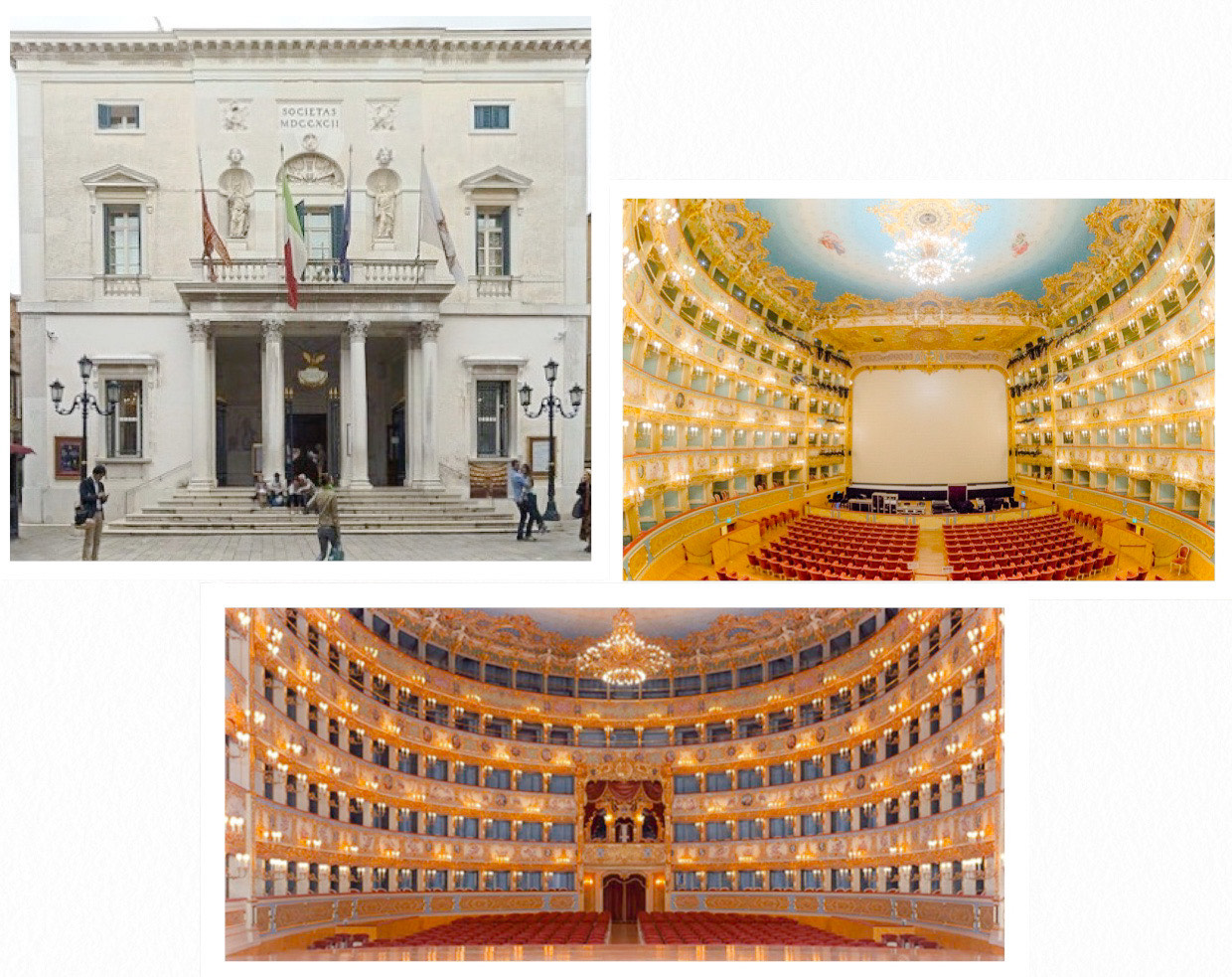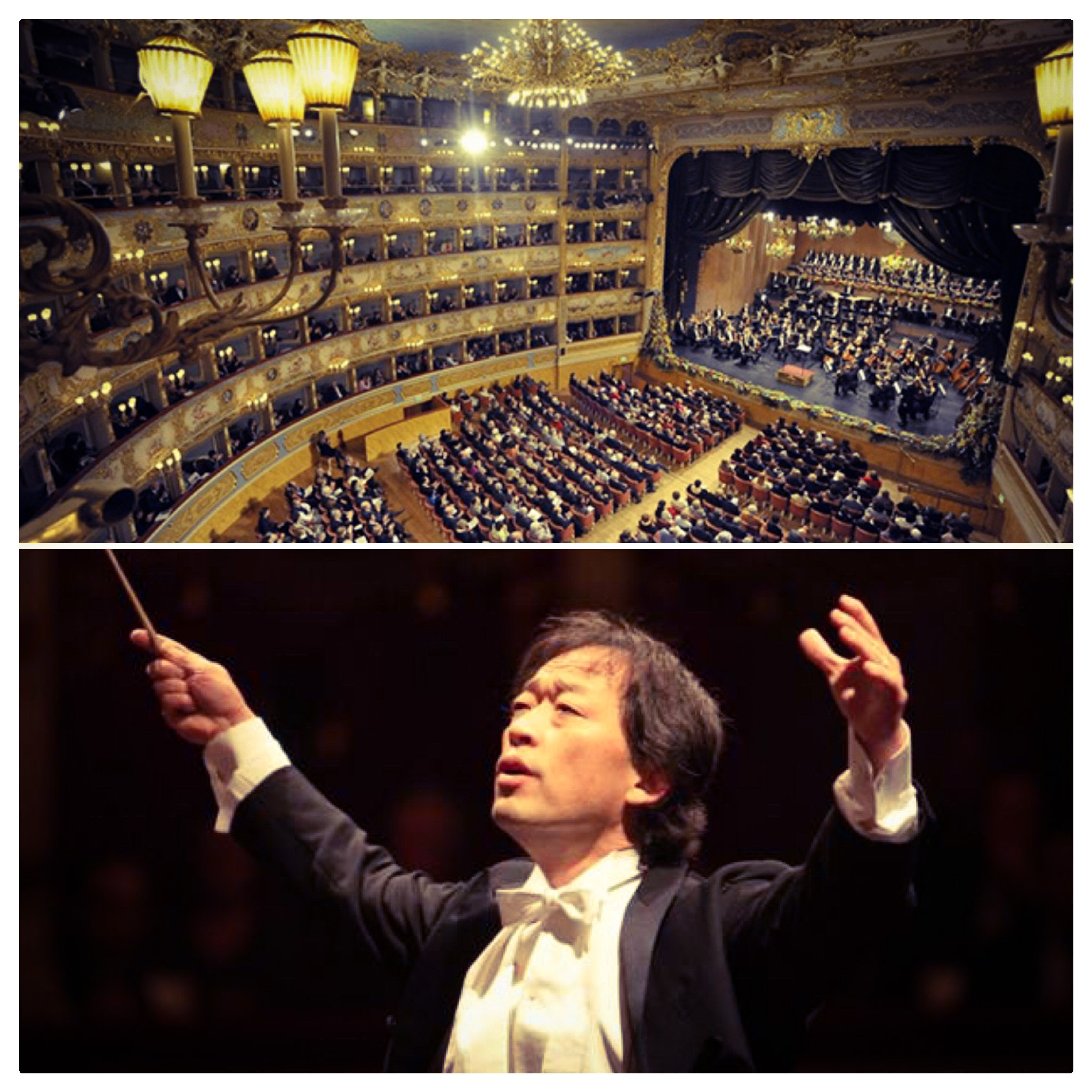The traditional New Year's Eve concert will be held at the Grand Theatre La Fenice : every year the magic that unites the splendour of the art of a theatre that has won, in its history, the fire and foolishness of man, with the elegance of classical symphonic music performed by the Orchestra and the Theatre Choir, conducted by Maestro Myung-Whun Chung.
It is now 17 years that La Fenice hosts this prestigious event, making the social function of the theatre tangible, bringing people together and allowing them to share a unique experience. The stormy and sometimes dramatic past of the building has made it the son of all Venetians, and as such it is lived and protected: La Fenice is the theatre of everyone, adults and young people, of Venetians but also of Italians and foreigners, and its communicative value is a fundamental aspect because it is also able to have an educational effectiveness.
Today the Theatre enjoys splendid health, but it has not always been so: its history is written in that name that recalls mythological stories and that was a sign of omen....
Post fata resurgo: the history of theatre

Why does the Grand Theatre La Fenice have such a unique name? The answer to this question lies in the myth of the phoenix narrated by Herodotus, according to which from the ashes of the bird devoured by the flames released by the sun emerges a larva that in a few days gives life to a new phoenix, proud with its red plumage and long blue tail. The name was given to it by the Noble Society of the Palchettists who were forced to leave the San Benedetto theatre they had founded in the eighteenth century because of a judicial matter: so the new theatre was born in Campo Fantini, baptized "La Fenice" because, like the mythological bird, it found new life after difficult times.
They did not know, the Palchettisti, that that name would have imprinted like a brand name on the destiny of the theatre: a nomen omen that tragically tasted like an omen.
The building was designed by Giambattista Selva, the winner of the competition: a sober exterior with simple, classical architectural lines is balanced by an interior rich in decorations that finds their maximum expression in the golden stuccos is balanced.
The exterior is connoted by the imposing entrance colonnade raised from the field floor on a short but important staircase to amplify the visual impulse upwards. On the colonnade, on the upper floor, there is a balcony with a wide opening, flanked by two niches containing the statues of Music and Dance, by Meduna. The prospectus is closed by the two small openings of the mezzanine with two bas-reliefs in the centre and the date of the foundation in golden characters.
Once through the entrance, one finds oneself in the elegant foyer which then leads into the Apollinee Halls, spacious and bright, decorated with golden stuccoes and surrounded by a rich balustrade that runs around the entire perimeter: this is the place where private events and sumptuous dances that saw the Venetian aristocracy as protagonists took place and still take place today. You then enter the theatre itself, with the semi-cycle shaped stalls that find inspiration in the Italian Renaissance squares: 5 orders for 35 boxes each, plus the upper gallery. The magnificent ceiling decorated in shades of blue and gold, embellished by the impressive bulk of the rich chandelier, the work of a master glassmaker from Murano.
Returning outside, on the back of Rio Menuo, Selva also designed an entrance to the water with a machined iron canopy, to allow access to the nobility who reached the theatre by gondola.
On 16 May 1792 the Grand Theatre La Fenice was inaugurated.
The theatre remained almost unchanged without the introduction of the Royal Box, performed for Napoleon and decorated with the Triumph of Apollo and Daphne.
Then came the fire, several times. The first fire dates back to December 31, 1836 which caused the collapse of part of the structure. Rebuilt in a short time, the theater returned to shine and perform its social and artistic function. The second, on 26 January 1996, was instead devastating: the flames devoured in one night the whole theatre causing its almost total collapse. Caused voluntarily by some workers of the company, who were carrying out maintenance work at that time, in order to find a plausible justification for the delays in operations and thus avoid the payment of contractual penalties. It was supposed to be a limited fire, but instead it was a catastrophe that sent centuries of history up in smoke, risking also hitting the entire city. It took 122,000 liters of water to overcome the flames and a great restoration project moved by the love of the citizens for their theater to resurrect the Phoenix from its ashes. The restoration was entrusted to the architect Aldo Rossi and on December 14, 2003 the theatre was inaugurated under the eyes of the world and the baton directed by Maestro Riccardo Muti.
The mythological bird has seen the light again, continuing to live in the splendour of art, winning the fire and the greed of man.
New Year's Eve concert 2019/2020 under the direction of Maestro Myung-Whun Chung

The New Year's Eve concert 2019/2020, which will take place on four dates starting December 29, will be performed by the Orchestra and Choir of La Fenice Theatre under the direction of Korean conductor Myung-Whun Chung. The Maestro has a long career studded with greatinternational successes: he made his debut at only 7 years old as a pianist in his Seoul, winning a few years later the prestigious Cajkovskij piano competition in Moscow, and then finished his studies in the most prestigious schools in the United States, such as the Juilliard School in New York. He began his career as a conductor in 1979 when he became assistant to Carlo Maria Giulini at the Los Angeles Philharmonic, of which he became associate conductor in a short time. From there a brilliant professional life that saw him on the podium of the orchestras of the most prestigious theatres in the world, founding also his Asia Philharmonic. A man of great culture and sensitive to humanitarian initiatives, he was among Unicef's ambassadors: in 1995 he was elected "Man of the Year" by UNESCO and the following year he was awarded the Kumkuan prize, an important recognition in the cultural field given by the Korean government. He also received the Legion d'Honneur in France and Italy, President Mattarella appointed him Commander of the Order of the Star of Italy, for the contribution he made to the culture of our country. Strong his link with Venice and La Fenice, in the 2017 also receiving the keys of the city from the Municipality for his important commitment to the theater.
The concert he will conduct this year in La Fenice will consist of two parts: the first exclusively orchestral with the performance of Symphony n.4 in A major op.90. Italian by Felix Mendelssohn Bartholdy; the second will be dedicated to melodrama with the performance of a series of arias, duets and choral passages from the most beloved operatic repertoire, which will be concluded with the "Và pensiero" by Nabucco and the toast "Libia mnè lieti calici" by Traviata, both operas by Giuseppe Verdi. This second part, as per tradition, will be broadcast by Rai1 live TV on January 1, 2020 at 12:20.
These are the days of the event:
- December 29th at 20:00
- December 30th at 17:00
- 31 December at 16:00
- January 1st at 11:15 a.m.
For info and purchase tickets click here: https://www.teatrolafenice.it/en/event/new-year-concert-2020/










Lascia un commento